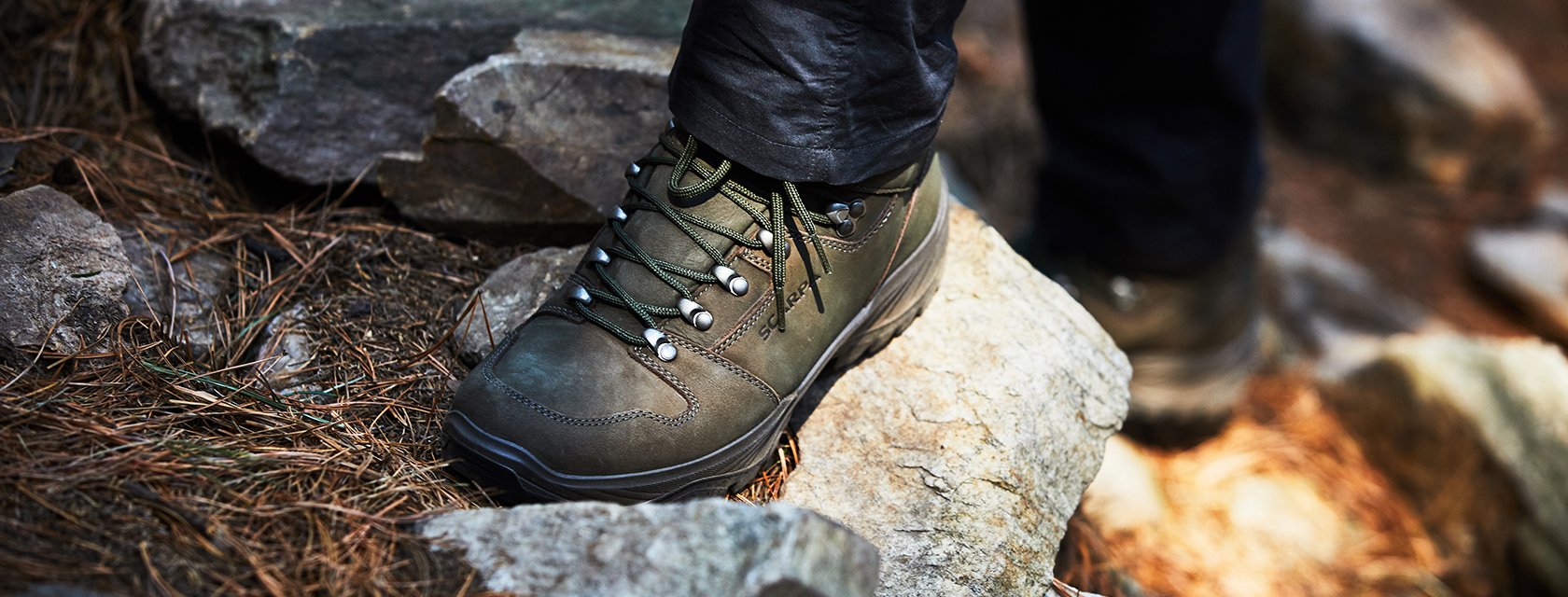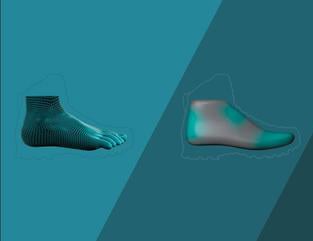
Get your boots fitting correctly
To get the most out of your boots it is important that they should fit you as well as possible...
A good pair of boots correctly fitted will give you many kilometres of comfortable use. Almost as much of the comfort lies in the fitting and adjustment of the boot as in the boots themselves. Here are some tips and tricks to get the best boots for you.
The 'LAST'
All quality boots are built around a carefully crafted foot shaped model - known as a "last". It is the last which gives a boot its fit characteristics. SCARPA develop a last to specifically suit the end use of each boot. The quality of the lasting, and the time that each upper spends on the last, is crucial in giving SCARPA boots their renowned shape and fit.
Additionally, Scarpa were the first company to develop a purpose made last for women's boots. Today every ladies specific model has a dedicated female last. These lasts are slimmer in the mid foot and heel areas. This female last may also be appropriate for a slim, low volume male foot and conversely a high volume, broad female foot may be better suited to the standard last.


Getting the right size and fit
The starting point when fitting a boot is to ensure that you have the right size. The critical size element is the length. If in doubt go for a size that is slightly large rather than one that is too small. Boots will often give or can be modified in width terms but very little can be done to modify the length of a boot. When trying the boot on, do so with your usual sock combination.
Keep the end use of the boot in mind. If you are going to use your boots when carrying a heavy pack then this will alter the loading and shape of your foot. Try boots on wearing a loaded pack.
If your boots will be used tramping uphill and downhill, simulate this when trying the boots on using incline boards. When testing in a down hill mode, properly laced up, your toes should not be pushing against the front of the boots. Equally, there should not be as much of a finger width at the heel otherwise your boot volume is too large for you.
Socks are an ideal way of making small adjustments to the volume and fit of the boot
Experiment with the combination and density of socks you use to get the best fit. We believe that you should never wear more than two pairs - a liner and an outer sock. If you need more than two socks it is likely that you need to take the next boot size down. Try to buy good performance socks. A few guidelines to look for in a good sock are:
- The tightness of the knit - a good sock will normally be a tight and smooth knit.
- Make sure there is good shaping to the sock - tube socks should be avoided.
- Check that the sock has good stretch and elasticity.
- If possible try to use socks that wick moisture away (the foot puts out around 50ml of sweat per day)

Optimise the fit
It is not uncommon to find that some modification to the boot is required to get an optimal fit. There are several ways to achieve this:- Footbeds - There are a variety of high performance footbeds available to suit differing needs.
- Volume Adjusters - A thin insert which can be added under the footbed to reduce the overall volume of the boot. This can make up to a half size difference in fit.
- Rubbing Bars - Some people have specific foot problems (e.g. swollen toe joints) which can cause problems when fitting new boots. It is worth knowing that boots can often be 'stretched' in specific areas to ease any painful rub points. Some specialist shops have rubbing bars specifically designed for this purpose. It is also possible to modify slightly heel and toe shapes to improve the fit of a boot. However this is a job best done by a trained boot fitter and we would recommend that it is done as a 'retro fit' adjustment.
Lacing
Even the best fitting boot will not give maximum performance unless it is correctly laced up. Correct lacing ensures that boot fits snugly and will prevent 'forward slip' of the foot in the boot and will reduce friction that could otherwise lead to blisters.
When lacing the boot ensure that you start from the toe and gradually tension the lace between each set of hooks. Lace locks allow for the tension to be held over the fore foot whist giving a separate level of adjustment and tension around the ankle of the boot.
Be prepared to adjust your lacing as you go. It is common to find that you need to re-tension the lacing after a short distance even in boots that have been well broken-in. Also the foot shape will adjust during the day with temperature, terrain and load carried.


Break your boots in
As a general rule high performance hill and mountaineering boots are made from thicker leathers and have stiffer midsoles than lower level walking boots. This means you will need to break in higher performance boots. Start by wearing them for a short distance and progressively lengthen the walks that you do. Never be tempted to take new boots and go out for a long trip in them. Always break them in over time.
It is often easier to prevent rubbing or blister problems. A piece of elastoplast or Second Skin put on early will often prevent a blister forming.
Take care of your boots
After each use rinse off mud and dirt with clean water. Remove any stubborn dirt with a sponge, damp cloth or brush. If your boots are particularly dirty you can use a cleaning product such as Nikwax Footwear Cleaning Gel.
Dry your boots naturally over time in a cool, dry place with good air circulation. Never force dry your boots using heat, as this will damage the leather uppers.
Regularly treat them with a suitable waterproofing treatment applicable to the type of boots you have. We recommend re-proofing the boots whenever they get particularly dirty or when water stops beading (turning to droplets) on the surface of the boots. Take care to apply treatments to tongues, D. rings and hooks. Do not over treat them as this can soften the leather and damage stitching.

Thanks to The Mountain Boot Company, scarpa.co.uk for sharing this content.
